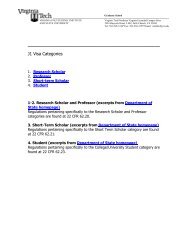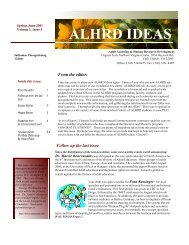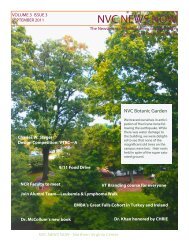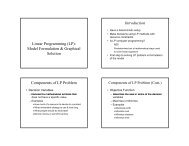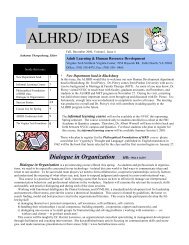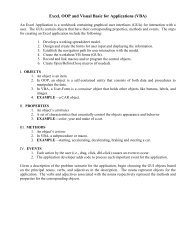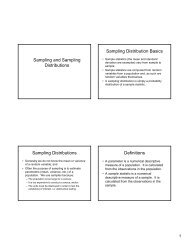Chapter 9
Chapter 9
Chapter 9
Create successful ePaper yourself
Turn your PDF publications into a flip-book with our unique Google optimized e-Paper software.
Large Sample Test of Hypothesis about<br />
a Binomial Probability<br />
• Inferences about proportions (or percentages)<br />
are often made in the context of the probability,<br />
p, of “success” for a binomial distribution.<br />
• Previously we have calculated a confidence<br />
interval for p.<br />
• For hypothesis tests on proportions, do not use<br />
the sample proportion to calculate the standard<br />
deviation. Instead, use the standard deviation<br />
based on the value of the null hypothesis.<br />
•H 0 :<br />
•H a :<br />
p<br />
• Test statistic:<br />
• Rejection region:<br />
Hypothesis Test<br />
= p<br />
0<br />
p><br />
p0<br />
p<<br />
p0<br />
p≠<br />
p<br />
0<br />
p$<br />
− p<br />
z =<br />
σ<br />
z<br />
z<br />
z<br />
p$<br />
><br />
<<br />
0<br />
><br />
z<br />
z<br />
α<br />
α<br />
z<br />
α<br />
2<br />
• Where<br />
x<br />
$p =<br />
n<br />
p q<br />
σ $p =<br />
n<br />
0 0<br />
Example<br />
• A rating service for local radio stations claims<br />
that 40% of the prime drive-time audience listens<br />
to WXIX. You are the advertising manager of a<br />
competing radio station and you doubt that<br />
WXIX’s market share is that large. Formulate<br />
and test the appropriate hypothesis at the 5%<br />
significance level if 380 people out of 1,000<br />
surveyed say that they listen to WXIX. What is<br />
the p-value?<br />
6





